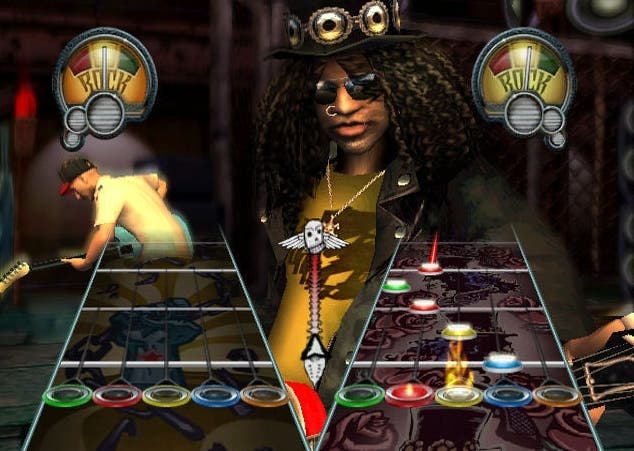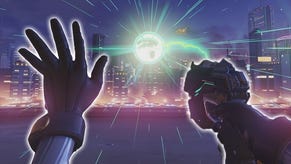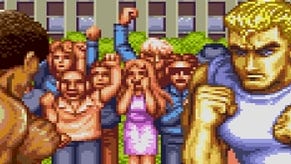Guitar Hero III: Legends of Rock
Putting PS2 and 360 to the test. No need to fret.
If I'd spent anything like the amount of time with an actual guitar as I have with Guitar Hero, I'd probably be playing to packed-out stadiums by now. I'd be the next Hendrix, only female, right-handed and with slightly less excellent hair. There are people who might consider spending about six hours a week playing a pretend guitar laughable, but you understand me, dear readers. You understand how important it is that Neversoft gets Guitar Hero III right, especially after the (Harmonix-designed, I should point out) damp squib that was Rocks the 80s.
Happily, it's all worked out as well as could possibly have been imagined. We've got seventy fantastic tracks, all transposed perfectly into five-button tablature. We've got perfect, roof-raising multiplayer modes, all of them fully online. It's worth pointing out that Legends of Rock is not technically a new game; it's a nicer-looking, more complete version of an old game. But when that old game is as good as Guitar Hero II, and the chief additions are fully licensed songs, an incredible co-op career mode and long-awaited online functionality, that criticism falls completely flat (except, perhaps, in the case of the comparatively rough-looking, online-deprived PS2 version). Guitar Hero III isn't an expansion pack, and Neversoft has not been remotely complacent in bringing the series forward. The changes here aren't padding; they're conscious, informed adjustments that make a great game much better.
Firstly, there's that gorgeous, weighty new controller. It has 'Gibson' proudly flashed across the head of the little plastic headstock, a detachable neck and faceplate, a much sturdier strum bar, prettier buttons, and absolutely no wires - which in itself opens up whole new levels of rock-shape-throwing possibility. Apart from looking much cooler (indeed, I'd venture that it's about as cool as pretend guitars can look), it also plays a bit better than the old Xplorer and SG models thanks to its comfortable weight and smoother buttons, which are clearly designed to take a lot of punishment.

It probably won't take anywhere near as much punishment as you will. Neversoft has ramped up the difficulty on Expert so that pretty much everyone except proud owners of GH2's Kick the Bucket Achievement can expect to have their arse handed to them with pleasing regularity - the tepidity of Guitar Hero 80s is long gone. Bonus songs like Through the Fire and Flames and Take This Life - hell, even the last tier's eclectic mix of shred-heavy, screaming metal and joyful country riffs - provide whole new challenges even for the most practiced guitar heroes. Then there's the return of GH2's performance mode, which removes everything on the screen except the background, and the introduction of a slightly more feasible challenge in the form of precision mode, which unlocks upon completion of the Expert career and completely removes the timing window for notes. Hardcore.
Some American reviewers have even been complaining about the difficulty, but frankly, they're wimps. For a rhythm-action game - especially one with as many skilled devotees as Guitar Hero - there is no such thing as 'too difficult' on the expert levels, and as always the game's four difficulty settings are designed so that everybody has their comfort zone. What's most important is that, as ever, you'll have incredible fun with Guitar Hero even if you never make it any higher than Medium, such is the infectious, incomparable joy of making pretend music with a plastic, tilt-sensitive instrument.

The track list makes or breaks any music game, of course, and thankfully it's impossible to complain about Guitar Hero III's. Gone are the covers - save for One by those notorious killjoys, Metallica, which is sadly a particularly glaring anomaly. [Editor's note: Keza now informs us that One is not in fact a cover, "it just sounds terrible". She also says she's sorry!] There's far more of a European focus, with pretty much equal musical representation from each side of the pond. The only possible gripe here is a certain loss of obscurity, but the people who mourn that will be very much in the minority. It turns out that Guitar Hero is more fun when you're playing songs you actually know than when it's trying to introduce you to little-known Bostonian prog-rock. The tremendous improvement in co-op is largely due to the diversity of the track list; instead of shoehorning lacklustre bass parts into every song, co-op career selects forty songs from the roster, some multiplayer-exclusive, with sufficiently challenging, interesting bass or support parts to make them a joy for both players. It's superb for multiple rock-god residences, or online with distant band-mates.
The game looks fantastic. Even the little Neversoft intro looks stunningly good. The art style has managed the developer transition intact, but it looks altogether more polished now; what's happening in the background, merely incidental before, has had much-needed attention lavished upon it and is now a spectacle to rival the best-looking current games. We've also got new, gently humourous cut-scenes, drawn in the style of the Guitar Hero II TV advert from a while ago.
The characters, too, have all been turned up to eleven, so to speak - you can practically smell the stench of week-old sweat wafting from Axel Steel's minging denims. There's also the fantastic addition of actual real-life guitarists Tom Morello and Slash alongside Guitar Hero's own excellent rock archetypes, which adds wow-factor in spades. It's hard to believe that Guitar Hero was once just an import curiosity, now that it's a world-famous, real life rock-god-endorsed phenomenon with an almost complete complement of fully licensed songs.

Hand in hand with the new characters come Career mode's new boss battles, and a new multiplayer mode, Guitar Battle. It introduces Amplitude's disruptive items to the Guitar Hero mix; hitting sequences of notes earns you an item, like lefty-flip or broken-string, with which to inconvenience your opponent. It works well, albeit in an incredibly silly way. It can liven up dull competitive matches - say, between an Expert and Medium player - but in the context of the career mode, they can feel random and frustrating. There are only three boss battles in the entire game, and clever use of items is the only way to win them; they're invariably a lot better at guitar than you. Unsurprising, given that they're virtual representations of legendary, world-renowned guitarists and we're... well, let's be honest, we're playing pretend instruments in our living rooms.
Who cares, though, when it's this much fun?
Despite sharing the exact same innards as Guitar Hero II, Legends of Rock is, in every conceivable way, a better product than its predecessors. It's better presented, better put together, more professional, more complete. As the series always has, it brings fantastic music together with challenging, addictive, endlessly rewarding gameplay and a great sense of style - only this time it has flawless co-op, online multiplayer, and a 1980s German-language punk anthem.
In other words, it's damned near perfect.




